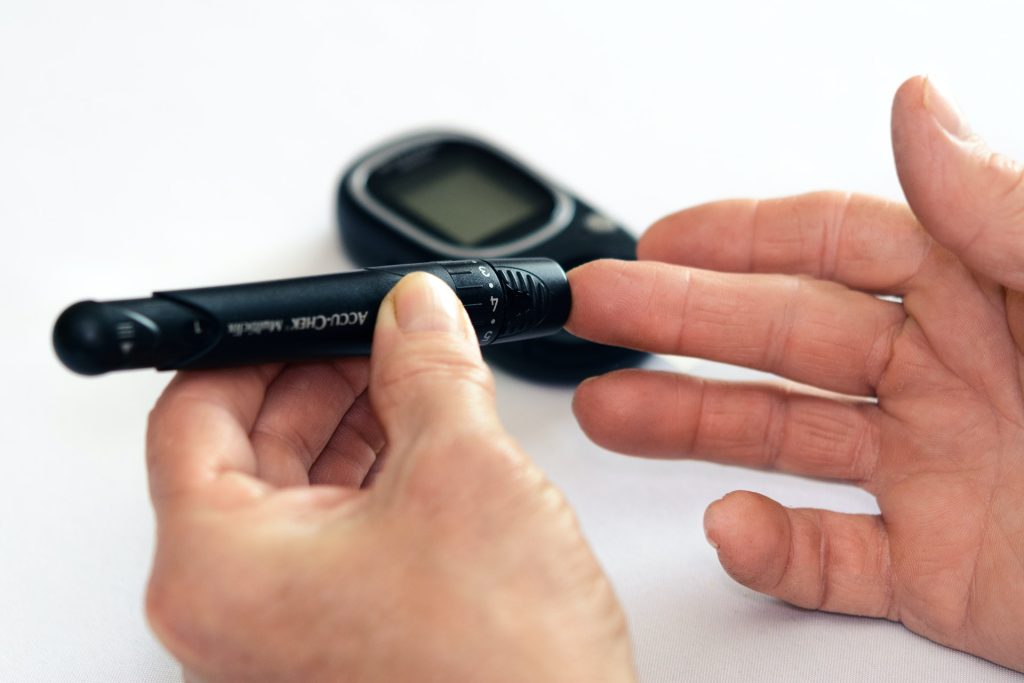A Needle-free Way of Blood Glucose Monitoring

In order to find an alternative to lancets for blood glucose monitoring, researchers applied needle-free jet injection, an emerging but well-developed technique in which a drug is delivered directly with a high-speed narrow jet of fluid.
The study, led by ABI researchers Jiali Xu and James McKeage, demonstrated for the first time that a jet injector could also be used to collect blood samples from humans – that is, release enough blood for glucose sampling, sans needles. The findings appear in the Journal of Diabetes Science and Technology.
Fingertips are the preferred site for blood sampling because they have a high density of blood vessels, they are also sensitive, and pain, skin damage, bruising and risk of infection from regular ‘pricking’ has spurred increasing efforts to develop needle-free methods of blood testing for people with diabetes.
Jet injection, which does not rely on a needle, is an appealing alternative. Jiali Xu of the Auckland Bionengineering Institute (ABI) and her team demonstrated that the technology, using electric motors rather than the standard mechanical spring, could also be used to pierce the skin with a small volume of harmless saline solution, releasing enough blood for glucose concentration measurement.
The study involved 20 healthy participants, each of which received a lancet prick and jet injection on four fingertips through three differently shaped and sized nozzles. “Which were designed to mimic the wound left from a lancet prick, in the anticipation that it might release blood in a way similar to a lancet prick,” said Ms Xu.
Some nozzle shapes performing better than others – a ‘slot’ shaped nozzle released more blood than a circle-shaped nozzle, for instance.
Most of the different jet injection nozzles were generally perceived by the participants, who were unable to see the injections, as no more painful than a standard lancet, and in some cases, less so. A questionnaire was given 24 hours later to assess pain, swelling and bleeding.
People with diabetes may find jet injection more acceptable than using a needle, but the researchers caution against jumping to conclusions. “When you know there’s not a device that is pricking your skin, you could speculate that people will find jet injection more acceptable,” says Professor Andrew Taberner, head of the Bioinstrumentation Lab at the ABI, and Ms Xu’s supervisor. “But we don’t have evidence to back that up. That wasn’t part of this study. We were first trying to find out if it worked, and it did.”
He was pleased, but not surprised. “Diesel mechanics have known for years that you should never put your finger in front of a fuel injector, because it will inject fuel into your finger. They found this out the hard way. But we’re taking advantage of what diesel mechanics discovered accidentally years ago, with a very small amount of harmless liquid, to deliberately release blood.”
The team is now trying to see if they can also extract blood with this technology, allowing for the design of an even smaller nozzle.
Moreover, “our technology has the capability to both deliver and withdraw fluid. No other jet projection technology has that capacity,” said Dr Taberner.
Development and commercialisation of the technology will take time but he believes Ms Xu’s research will contribute to the ultimate aim, of the development of a single lancet-free reversible technology that will allow for both blood sampling and insulin delivery based on the glucose measurement in one device.
“I hope that this research will contribute to that, and the improvement in human healthcare, especially in the management of diabetes,” said Ms Xu.
Source: University of Auckland

